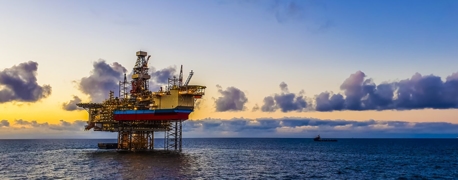Maritime Piracy: Does It Really Happen?

As advocates for maritime worker safety, we’re intimately familiar with the unique risks that crew members face, from turbulent weather conditions to dangerous machinery to skeleton staffing. But one hazard, often underrepresented in discussions, is that of piracy. Maritime piracy, while considered rare, is a distinct threat: 100 seafarers were held hostage by pirates in 2020 alone, leading to global losses totaling $16 billion per year.
Today, we delve into the less-charted waters of piracy—its nature, history, prevalence, and potential solutions.
The Fundamentals of Piracy
Maritime piracy involves criminal acts committed at sea, primarily violence, robbery, or illegal seizure of vessels or their cargo. An international crime, piracy threatens the safety of seafarers and disrupts global trade and economic stability. Most piracy incidents occur in regions such as the Gulf of Guinea, the Indian Ocean, and the South China Sea, where criminal organizations exploit vulnerable maritime routes.
For thousands of years, piracy has shadowed maritime trade.
In ancient Greece, piracy—then characterized by raiding and enslavement—was initially an acceptable profession. However, as stable trade became essential, it was gradually seen as disgraceful and disruptive. That view of piracy remained true through the Medieval and Renaissance periods, where piracy manifested as ‘protection’ rackets, where pirates essentially charged seafarers and traders for safeguarding them from their own attacks. Piracy in this period also took on a religious or social dimension; Muslim corsairs would typically attack Christian settlements and towns as far north as Iceland, while Christian corsairs attacked Muslim cities and towns along the southern and eastern rim of the Mediterranean Sea.
The rise of national states in the Renaissance era also gave rise to privateers, or raiders employed by the state to utilize piracy against an enemy nation’s ships. Eventually, however, the needs of global commerce relegated piracy back to the ranks of criminal enterprise.
Factors Driving Modern Piracy
Modern piracy is a multifaceted issue with roots in economic deprivation, weak governance, geographical vulnerabilities, and shipping logistics.
Economic Incentive: Piracy thrives where economic despair exists. Driven by financial gain through theft of cargo, ransom payments, or illicit trade, piracy is often an outcome of high-value commerce clashing with poverty-stricken areas with high inflation or high unemployment.
Weak Governance: Ineffective governance and law enforcement often give pirates a free hand. Corruption, insufficient maritime security measures, and political instability foster conditions ripe for piracy.
Geography: Geographic factors, like proximity to international trade routes, insufficient maritime surveillance, and access to remote areas, contribute to piracy hotspots. Shipping lanes' narrowness can further facilitate pirate operations.
Contemporary Logistics: Small crew sizes, favored by shipping companies for cost-efficiency, make modern vessels attractive targets for hijacking and crew capture.
Piracy: Not as Romantic as the Movies
Unlike its romanticized cinematic portrayal, piracy is a grave problem. The 21st century witnessed a peak in piracy incidents in 2011, with 570 reported cases, followed by a steady decline. Nonetheless, piracy continues to undermine logistics confidence, inflate shipping costs due to increased security investments, and disrupt global trade.
National interests—a natural part of global trade—can get pulled into international incidents via piracy. The movie Captain Phillips dramatizes the real-life hijacking of the Maersk Alabama, an American vessel, by a crew of Somali pirates. The incident was resolved by a team of US Navy Seals, who killed three of the four captors. The Maersk Alabama hijacking was the first time in 200 years that pirates boarded a US vessel.
The human cost of piracy is significant—beyond the physical injuries, victims often suffer long-lasting psychological trauma. As advocates, these are the sort of injuries for which we’ve helped victims seek compensation from insurers or culpable parties. On a wider scale, advocates often press for legal reforms to address piracy’s root causes.
Could Autonomous Ships Signal an End to Piracy?
In a recent piece, we explored the prospect of autonomous ships. Such vessels lack a human-centric bridge or control center, and often, even an interior aside from a cargo hold. This radical design change could make traditional piracy targets—hijacking of the ship or crew ransom—impossible, thereby revolutionizing maritime safety.
Of course, it’s possible that piracy will evolve to address these technological advances. A fully remote-controlled ship might be harder to hijack using typical methods, but electronic methods might develop to rob shipping companies of control of their vessels. Such a method might bring a whole new meaning to the phrase “digital piracy.”
Piracy Remains the Specter of Offshore Work
Maritime piracy is a stark reminder of the unique challenges maritime workers face. With its roots in socio-economic disparities, governance shortfalls, geographical conditions, and modern shipping logistics, effectively tackling piracy calls for a holistic approach. We envision a future where comprehensive legal reforms, enhanced safety measures, and technological advances, like autonomous ships, collaborate to eradicate piracy once and for all, safeguarding our brave maritime workers as they navigate the seas.


